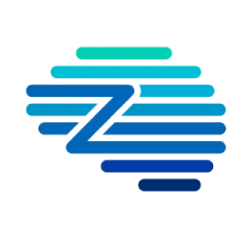Procurement leaders grappling with inefficient processes face a critical need: optimizing intake management. Understanding the benefits of implementing intake management in procurement, why it’s essential in procurement operations, and the tangible business impacts it can drive is a strategic gateway to greater efficiency. Let’s delve into how intake management streamlines workflows, enhances compliance, and unlocks strategic value, ensuring procurement teams can operate with maximum efficiency and effectiveness.
Understanding the Core Benefits of Intake Management
Intake management in procurement involves optimizing how businesses gather and organize procurement data. Implementing an efficient collection strategy enhances decision-making and boosts operational efficiency.
Enhanced Operational Efficiency
Embracing a centralized intake system significantly boosts operational efficiency. By reducing manual data entry and automating approval workflows, organizations can experience faster processing times, effectively minimizing bottlenecks. This efficiency is reflected in faster turnaround times that ensure stakeholders promptly receive necessary goods and services, facilitating a seamless procurement cycle.
Read more: Intake Management Best Practices And Key Strategies
Improved Compliance and Risk Management
Effective intake management plays a crucial role in risk management. It ensures policy adherence, aligning all procurement activities with internal policies and external regulations. This reduces the risk of non-compliance and potential penalties. Additionally, centralizing requests helps monitor and control spending, lowering the risks associated with maverick purchases.
Data-Driven Decision Making
A well-structured intake system offers comprehensive visibility through real-time tracking and reporting. This capability provides vital insights into spending patterns and supplier performance, driving process efficiencies. Analyzing intake data enables procurement teams to pinpoint areas for optimization, bringing about continuous improvements in procurement strategies.
Strengthened Stakeholder Relationships
Gartner, procurement teams that ignore their internal stakeholder relationships will find themselves unable to deliver on many of their strategic projects and cost optimization goals. Effective intake management fosters transparent communication with internal stakeholders, building trust and promoting collaboration.
Why Implement Intake Management in Procurement
Building on the advantages of streamlined processes, implementing intake management in procurement effortlessly aligns with strategic goals. A crucial factor is the measurable impact on compliance and efficiency.
One compelling reason to adopt intake management is its ability to proactively mitigate risk. According to a McKinsey study, companies that digitized their source-to-pay process achieved a 50% reduction in compliance violations. Clearly defining intake processes ensures procurement activities are audit-ready and adhere to both internal and regulatory standards.
Another reason is the tangible enhancement in operational performance. The Hackett Group found that digitizing procurement processes can increase efficiency by up to 40%. With intake management, procurement teams adeptly streamline workflows from request to approval, minimizing manual intervention and speeding up cycle times.
Cost control is another key benefit. By centralizing and digitizing intake, companies gain real-time insights into spend patterns and supplier performance. This centralization facilitates better demand forecasting and supplier negotiations, reducing unnecessary spending and optimizing supplier relationships.
Overall, intake management serves as a foundation for procurement excellence, paving the way for strategic value, compliance, and substantial cost savings.
Unveiling the Business Impact of Effective Intake Management
The business impact of effective intake management extends far beyond mere compliance and efficiency. It’s about realizing tangible, strategic benefits that ripple through the entire procurement landscape. For organizations in the manufacturing sector, this can mean the difference between competitive edge and obsolescence.
Listen to Podcast: Top Use Cases of AI in Intake Management: For Procurement Leaders
Consider the case of a leading automotive company that revamped its intake procedures. By implementing a centralized, automated system, they achieved a 400% increase in supplier onboarding speed, significantly enhancing their supply chain responsiveness.
In the retail industry, intake management has played a critical role in inventory accuracy. A large retail chain adopted advanced intake solutions to streamline procurement. This move resulted in a 30% reduction in order cycle time, directly impacting their inventory management efficiency.
- Cost-Efficiency Gains: Effective intake management helps in cutting unnecessary procurement expenses by providing real-time data and analytics for smarter purchasing decisions.
- Enhanced Supplier Collaboration: Organizations report improved supplier relationships, as central intake management enhances visibility and reliability, crucial for partnership growth.
Download Whitepaper: Intake Management Maturity – From Chaos to Control
An exemplary highlight comes from the tech sector. A major tech firm leveraged automated intake tools and observed a 20% reduction in procurement processing costs while improving procurement team productivity.
Ultimately, the right intake management setup transforms procurement into a dynamic, strategic asset, providing invaluable insights and fostering agile decision-making throughout the organization.
Best Practices for Maximizing Intake Management Advantages
Implementing best practices in intake management can significantly boost procurement effectiveness.Here are some best practices to harness these advantages:
- Centralization: Establish a single point of entry for procurement requests. This eases tracking and process consistency, ultimately reducing errors.
- Standardize Procedures: Utilize standard intake forms and criteria to simplify user submissions and ensure compliance. Consistency at entry points reduces processing time and promotes accuracy.
- Leverage AI and Automation: Implement AI-driven tools for data entry and approval routing, which optimize resources and eliminate manual effort.
- Prioritization: Use technology to categorize requests based on urgency and strategic importance, enabling effective resource allocation.
Download Whitepaper: Your GenAI Companion: Unlocking Deep Value in Intake Management with Merlin Intake
Vertical industry leaders have witnessed remarkable transformations by adopting such practices. For instance, a professional sports franchise reduced their costs to process a purchase order by 39%, from $121 to $74, after implementing an automated procurement system.
Regularly reviewing intake metrics and performance is another strategic move, indicative of agile procurement practices. This approach fosters continuous improvements and adaptability in procurement strategies.
Integrating these best practices in intake management not only optimizes efficiency but also equips businesses with scalable, responsive procurement operations ready to tackle future challenges.
Conclusion
In conclusion, optimizing intake management in procurement emerges as a strategic imperative to enhance operational efficiency, ensure compliance, and drive impactful business outcomes. By embracing best practices, leveraging technology, and prioritizing stakeholder relationships, organizations can navigate procurement challenges with agility and foresight. As you reflect on the insights shared, consider how refining your intake processes can unlock transformative value for your organization.
Take the next step towards procurement excellence by exploring customized solutions, consulting a procurement expert, or delving deeper into actionable strategies. Embrace the change, empower your procurement function, and pave the way for sustainable success.
Related Reads:
- Unlocking Success: Intake Management Best Practices And Key Strategies
- The Growing Significance of Intake Management in the Procurement Technology Market
- Intake-to-Pay vs. Procure-to-Pay: Key Differences and Selecting the Right Approach
- Revolutionizing Procurement: The Promising Future of Intake Processes
- Steps to Transform Your Procurement Intake Process
- Revolutionizing Procurement Requests and Intake Management: Empowering Users in the Procurement Ecosystem
- On Demand Webinar: Driving AP Transformation and Cost efficiency with AI-led Automation
- eBook: 7 Key Considerations to More Effective Supplier Risk Management
- Research Report: The C-Suite’s Guide to Successful Accounts Payable Transformation
- TechWatch: Integrated & Intelligent Source-to-Pay
- White Paper: Kill The Complexity- A Practical Handbook for Tackling Key Challenges in Procurement and Sourcing
- Solution: GenAI Powered Merlin Intake




























































